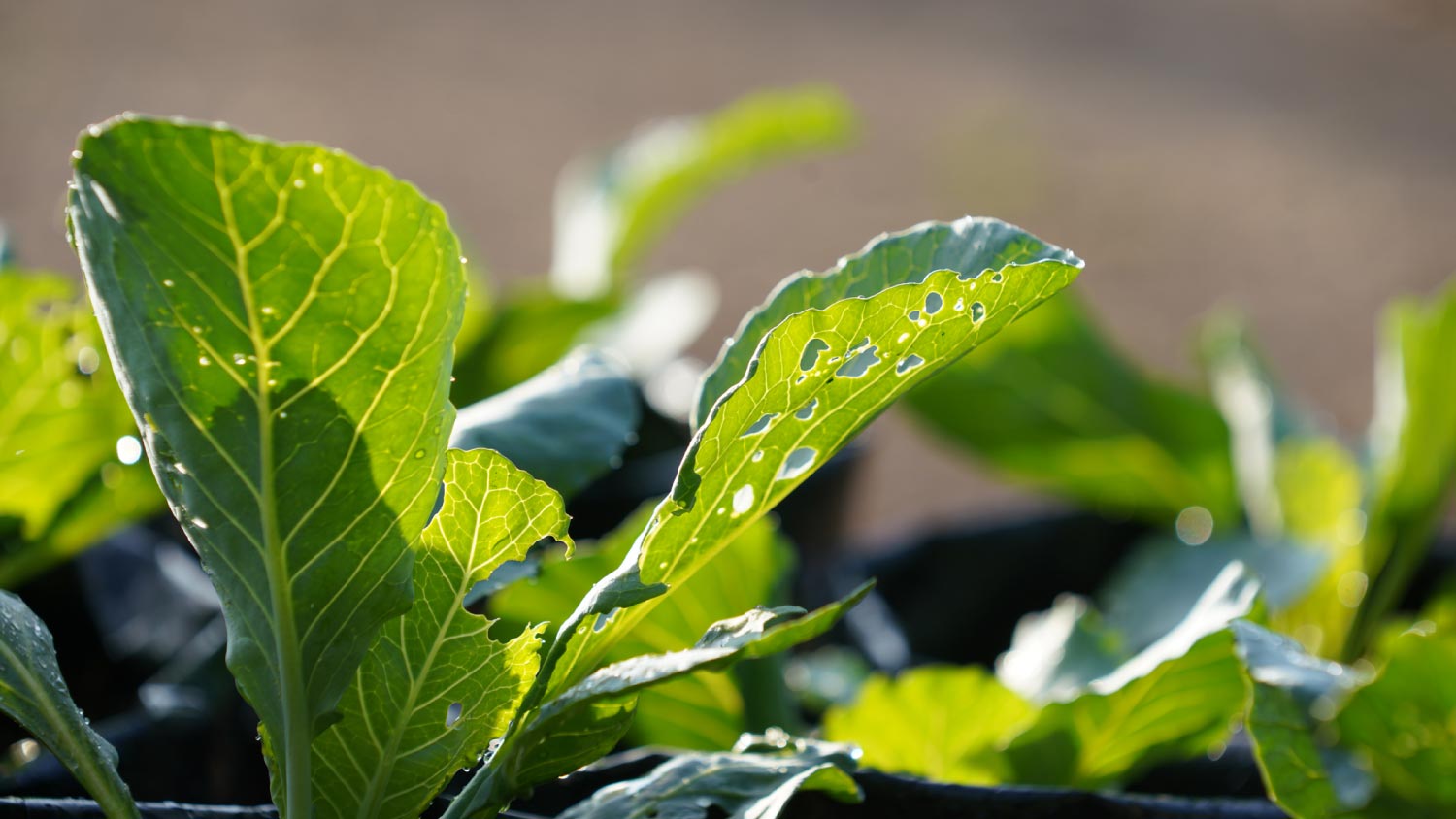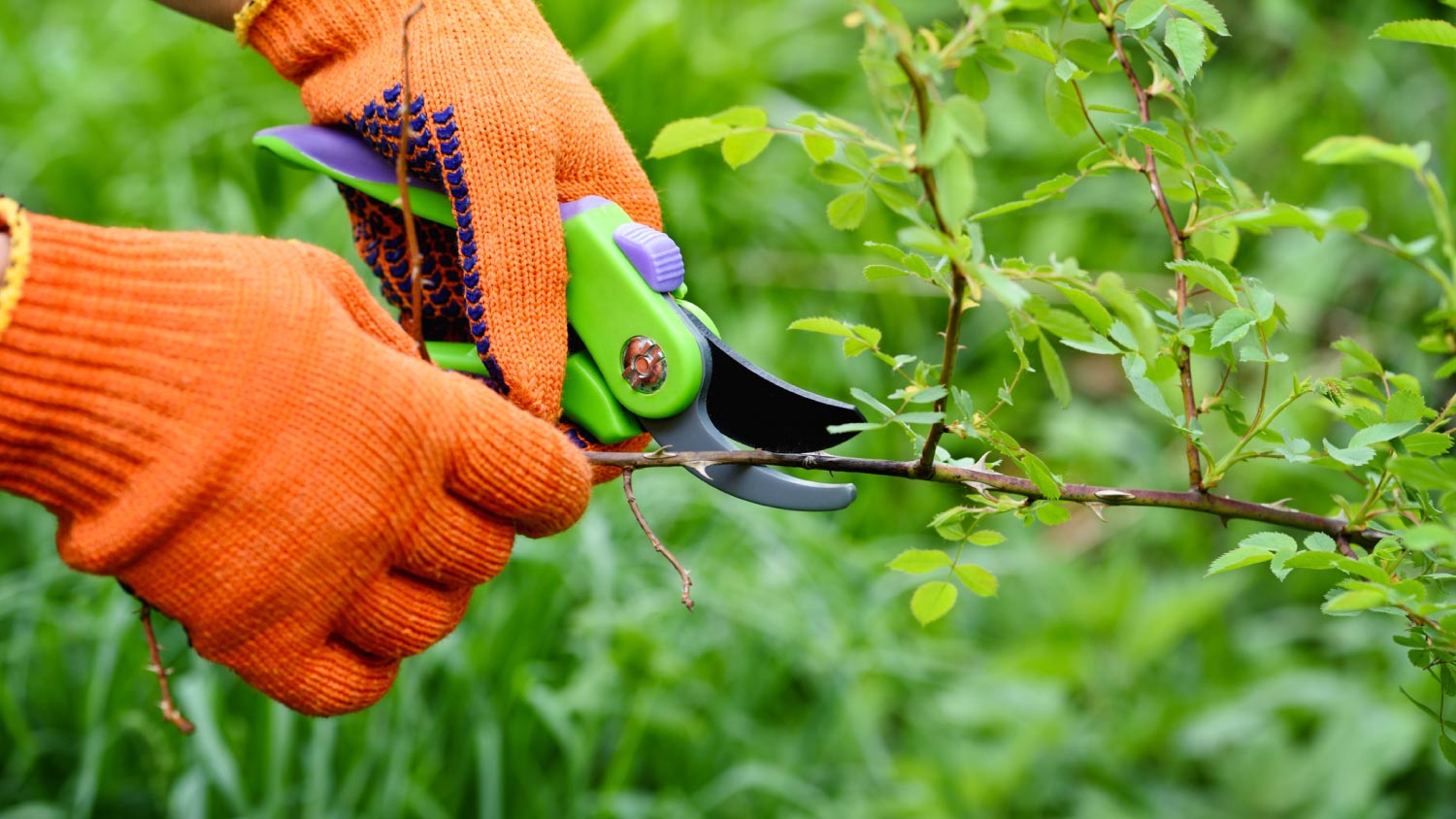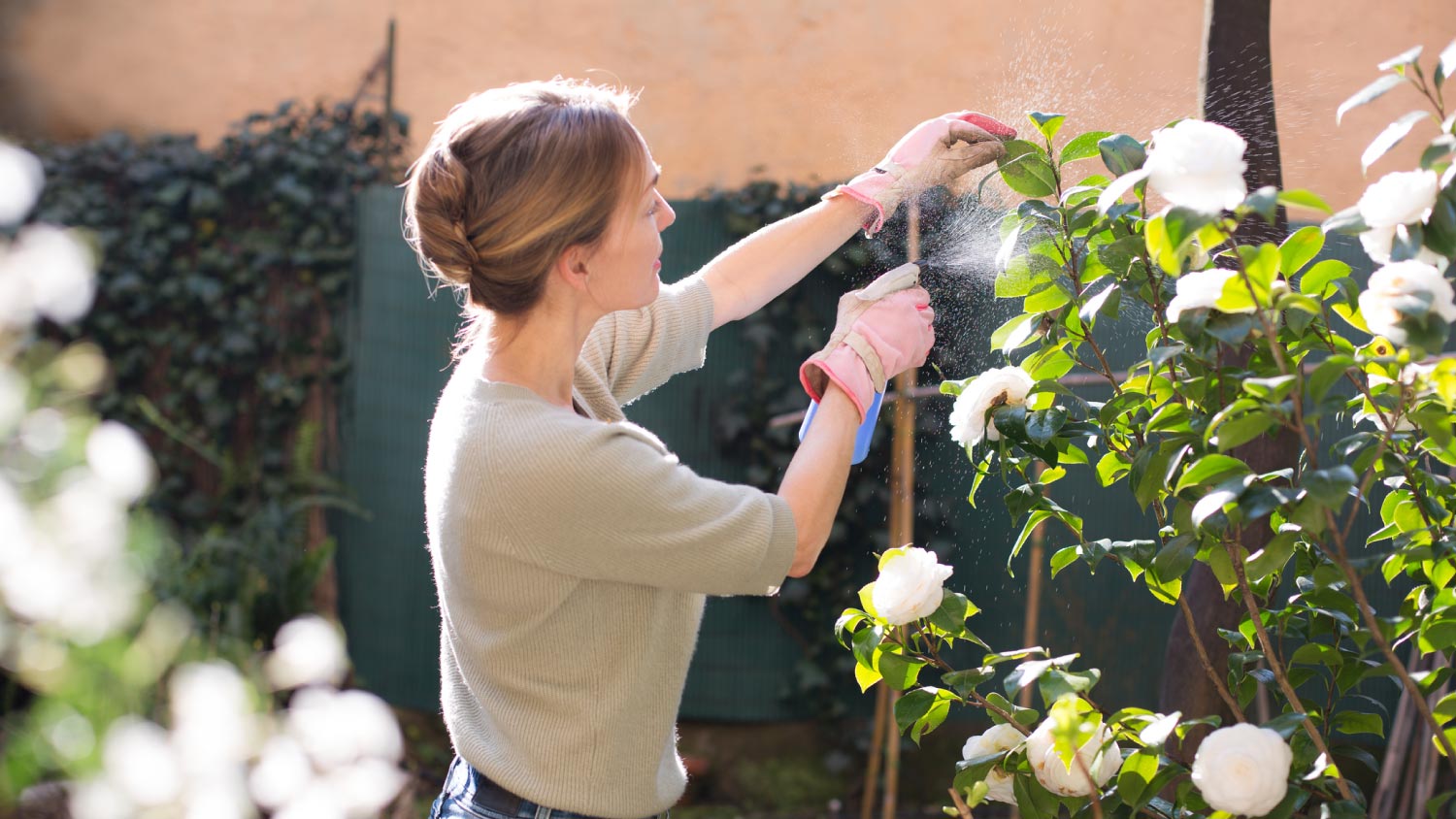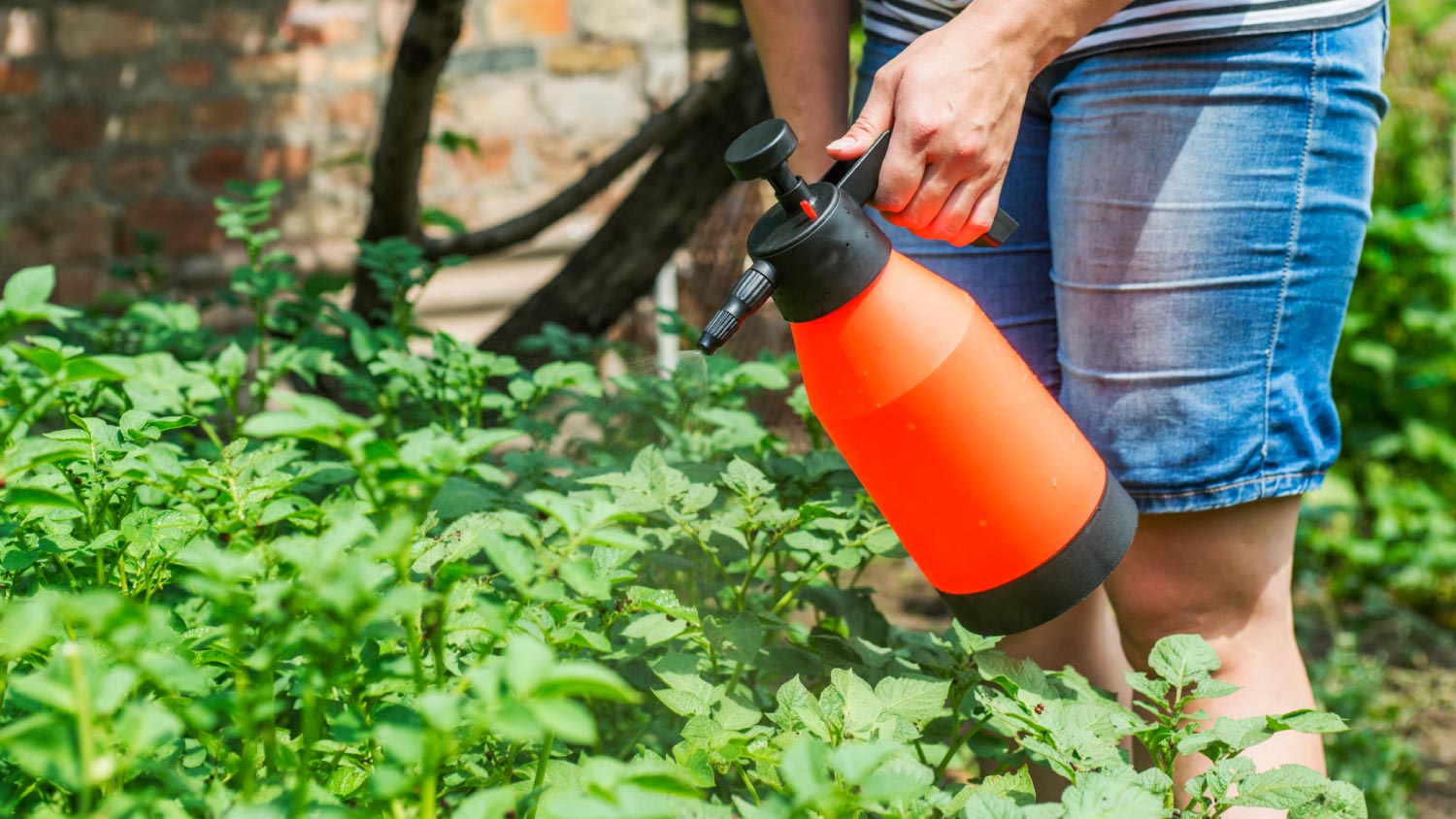
Whether you have bugs, bats, or rodents invading your home, you’ll want to contact an exterminator quickly. Find out how much pest control costs in Columbus, OH.
Aphids, meet your match


It’s springtime, and you’re excited to see all your landscaping work pay off in the form of beautiful flowers and maybe even some fruits, vegetables, and herbs—but then you see it: curled, stunted, sticky leaves and a mysterious cluster of tiny insects. You have an aphid infestation on your hands, and here’s what you can do to prevent them from damaging your garden.

Despite your pest-proof gardening skills, aphids have a way of getting into gardens. Aphids are small, soft-bodied insects that pierce and suck the sap out of plants. They tend to form colonies on the underside of leafy, tender plants.
While a few aphids generally don’t cause problems and even feed beneficial insects like ladybugs, aphid infestations can impact the appearance of your plants. Unlike ladybugs, butterflies, moths, and other beneficial pollinators, aphids suck away at your plants’ nutrients like green vampires, resulting in weakened, lackluster plants. Eventually, uncontrolled aphid colonies can lead to brown, yellow, wilted, or shriveled-up plants.
In addition to directly harming your plants, aphids also excrete “honeydew,” which, unlike the fruit, is a sugary waste that can encourage fungal infections that further harm your plants and can even turn your garden into a post-apocalyptic nightmare!

According to HomeAdvisor, removing aphids costs anywhere from $100 to $275. How much you’ll spend depends on the size of the infestation, the method you use, and whether or not you hire a pest control company to do the job.
Identifying aphids is easy once you know what to look for, and you’ll want to look for these little pests come spring and fall, as they multiply quickly once the aphid eggs hatch.
Aphids are tiny—less than 1/4 of an inch long—and are often light green, though some species are white, orange, black, grey, brown, yellow, or pink. You’ll also see two long antennae-like tubes, called cornicles, across their heads and backs.
Aphids love fruits, vegetables, and young and tender plants, so it’s essential to identify aphids before they ruin all your hard work. Keep an eye on seedlings and large, leafy greens. Check the undersides of your plants’ leaves for hidden aphids or signs of aphids.
For immaculate gardens, looking underneath each leaf can feel like a huge undertaking. It might be easier to inspect a few sections at a time and choose a few random leaves. Inspect your plants weekly to catch aphid infestations before they get out of hand.
Keep a lookout for an aphid infestation by looking for:
Spotty discoloration on leaves
Sticky leaves or stems
Shriveled leaves
Curled foliage
Stunted plant growth
Sooty-looking mold
If you identify aphids in your garden during your regular inspections, then it’s time to take action. Here’s how to deal with these pesky little insects.

Work smarter—not harder. Weak plants are an invitation for aphids to return, so inspect your plants and trim any diseased parts that show signs of major aphid destruction. Doing this first will decrease the time you spend manually spraying aphids with water or solutions in later steps.
The next step is to put your garden hose to use and spray as many aphids off your plants as possible. Hosing down early signs of aphids might be enough to deter them from multiplying and taking over your garden entirely, but remember to spray both the tops and undersides of leaves. Continue to spray down leaves every two to three days for a few weeks until no aphids remain.

Some stronger solutions for aphid removal might do the job for small- to medium-sized infestations, helping you avoid more powerful options altogether. Mix the following DIY solutions in a spray bottle and spray (or mix with diatomaceous earth and sprinkle) them onto the affected sites.
Mix 1 teaspoon of mild dish soap with a quart of water, and you might successfully banish aphids. Consider adding a dash of cayenne pepper for extra efficacy.
This substance repels aphids and other pests like ants and cabbage worms. It also serves as an antifungal to some strains of plant fungi, making it a multipurpose solution. Simply mix 1 teaspoon of neem oil with 1 quart of water in a spray bottle, and spray it on infected plants.
Peppermint, lavender, rosemary, clove, lemon, and thyme are all effective at killing aphids and their larvae without harming your plants. You can use any combination of essential oils, but if you don’t have too many on hand or don’t want to shuffle a bunch of jars of essential oils, choose peppermint oil. Peppermint is effective at deterring various pests with its strong smell.
Add a few drops of each essential oil of your choosing to a quart-sized spray bottle full of water, and spray it on the infestation sites.
This organic powder contains fossilized organisms with razor-sharp edges—to bugs, that is! It’s harmless to plants, but avoid applying diatomaceous earth on blooming plants, as it kills beneficial bugs in gardens, too.
Don’t feel defeated if you still spot aphids nosing about in your garden. You may need to tackle the infestation two to three times a week by hosing down and spraying your plants before you start seeing a significant decrease in aphids.

If you’ve tried everything and aphids are still running amok on your beloved plants, you might need to use pesticides. It’s important to avoid using any old pesticide in your garden, as some can harm beneficial insects and the animals that eat them.
Some horticultural oils are safe for plants and insects other than aphids, so always read the label and follow the instructions closely to help protect wildlife. For the most part, pyrethrins—insecticides derived from daisies—are the safest yet most effective pesticides for use in your garden.
Keeping aphids out of the yard doesn’t have to be an active process; in some instances, it’s a matter of choosing the right plants and avoiding others. Plants that repel aphids include catnip, garlic, onion, and chives. Plants that attract pollinators that eat aphids include:
Clover
Mint
Dandelions
Fennel
Yarrow
Marigolds
Conversely, you can intentionally grow plants that aphids like in areas of your yard that are far away from your garden. Aphids like mustard, zinnias, asters, and nasturtium, to name a few. If you already have these plants in your garden, you may want to remove them and replace them with some of the other aphid-repelling plants instead.
Preventing aphids saves you time and money that you’d otherwise spend trying to eradicate the pesky little insects. Though you might have to invest in a routine for aphid prevention, the right measures will keep aphids away before they harm your greenery.
Try out the following tips to keep your garden aphid-free:
Inspect your plants. Aphids don’t appear out of nowhere. Keep a close eye on your garden for signs of aphids to catch the infestation early on.
Avoid growing aphid-loving plants. Keep mustard, zinnias, asters, and more out of your garden so as not to tempt the pests. However, if you really enjoy growing these plants, try interplanting with the aphid-repelling plants listed below.
Grow aphid-repelling plants. Again, onions, garlic, and chives are several plants that help ward off aphid infestations.
Keep an eye out for ants. There might also be aphids where there are ants because ants love the honeydew excreted in aphid waste (yuck!).
Don’t overfertilize your lawn. Aphids like high nitrogen levels in plants, so opt for a slow-release fertilizer to prevent nitrogen levels from rising.
Use row covers on seedlings. Keep aphids and other pests out of your veggie garden with a row cover, but be sure to remove the cover once it warms up and the seedlings are 1 to 2 inches tall.
Attract pollinators. Let nature do the work by attracting ladybugs and lacewings. These bugs love beautiful flowers like marigolds, sunflowers, and daisies and just love eating aphids!
If you’ve tried the DIY route and still have aphids crawling all over your plants, call a landscaper to identify the infestation and get the aphids under control.
Landscapers can look at the natural configuration of your garden, determine why aphids won’t leave your yard alone, and offer recommendations on the best ways to remove aphids, so you don’t spend weeks troubleshooting an irritating pest problem.
From average costs to expert advice, get all the answers you need to get your job done.

Whether you have bugs, bats, or rodents invading your home, you’ll want to contact an exterminator quickly. Find out how much pest control costs in Columbus, OH.

How much does a gnat exterminator cost? The answer depends on the method of treatment and the level of infestation. Find out what plays into your budget.

Discover mosquito control service cost estimates, including average prices, key cost factors, and tips to save on professional mosquito treatments for your home.

Wondering how to kill stink bugs—and keep them away, for good? Read on for a DIY guide on how to get rid of stink bugs.

Fruit flies and fungus gnats can appear similar but require different removal approaches. Learn the main differences between gnats vs. fruit flies.

Need to get rid of pesky pantry bugs from your kitchen? Follow our step-by-step guide to learn more.